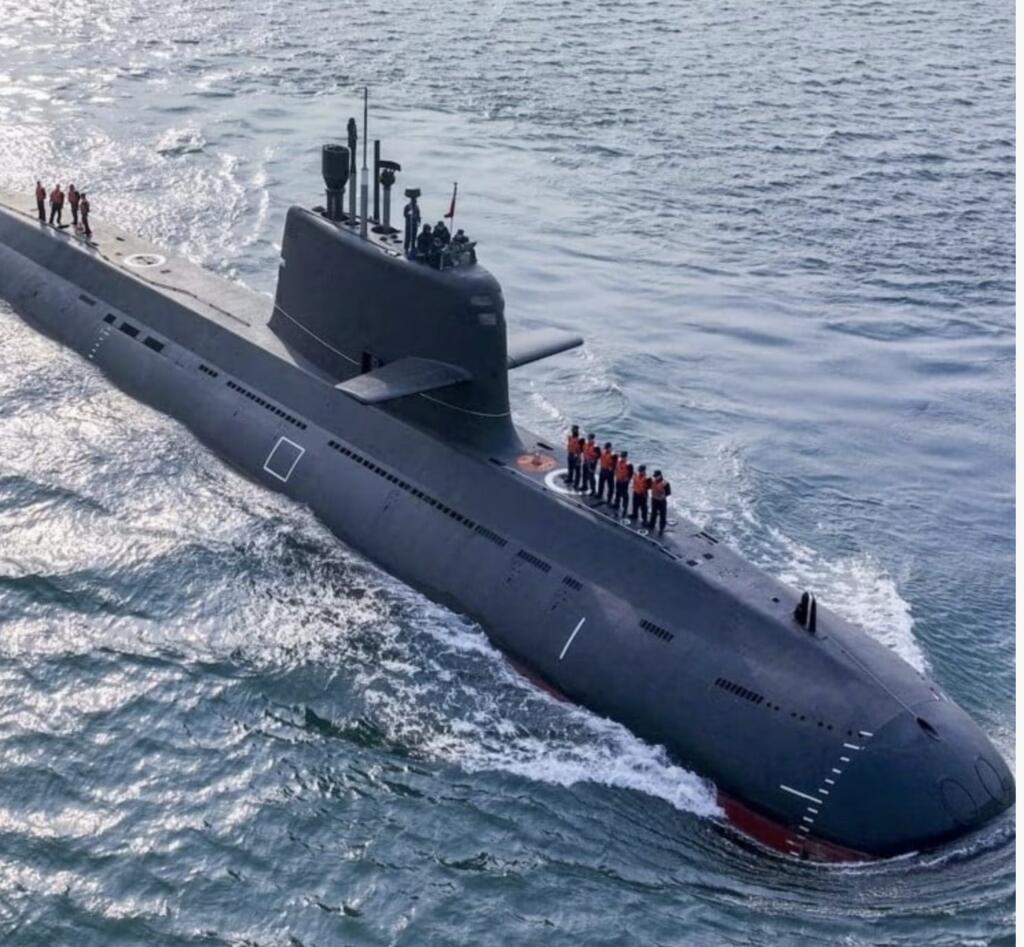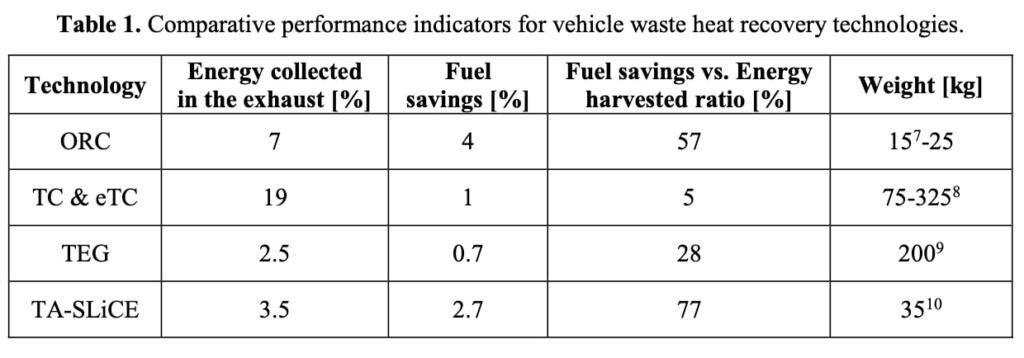China has built the most powerful thermoacoustic Stirling generator. The prototype delivered a groundbreaking 102 kilowatts of power from a heat source of 530 degrees Celsius (986 Fahrenheit). This is the first time this type of breakthrough generator has gone over 100 kilowatts. Thermoacoustic engine achieves high thermal-to-electrical efficiencies with no moving parts. The new generator converts sound directly into electrical energy.
The Chinese design can be used for ultraquiet submarines.

Nasa’s LEW-TOPS-80 patent proposed a thermoacoustic engine paired with an alternator to generate electricity in space. NASA has not shown a prototype.
NASA Glenn’s thermoacoustic power converter reshapes the conventional Stirling engine from a toroidal shape into a straight colinear arrangement. Instead of relying on failure-prone mechanical inertance and compliance tubes, this design achieves acoustical resonance by using electronic components. In a typical Stirling engine, the acoustical wave travels around a toroid and reflects back, forming a standing wave. In Glenn’s device, by contrast, the wave instead travels in a straight plane where a transducer receives the acoustical wave and electrical components modulate the signal. A second transducer on the diametrically opposed side reintroduces the acoustic wave with the correct phasing to achieve amplification and resonance. Glenn’s design allows the transducers to operate at high frequency while presenting a mass rather than stiffness impedance. Glenn’s magnetostrictive alternator uses stacked magnetostrictive materials under a biased magnetic and stress-induced compression. The acoustic energy from the engine travels through an impedance-matching layer (which can be formed from aerogel materials) that is physically connected to the magnetostrictive mass. Compression bolts keep the structure under compressive strain, allowing for the micron-scale compression of the magnetostrictive material and eliminating the need for bearings. The alternating compression and expansion of the magnetostrictive material creates an alternating magnetic field that then induces an electric current in a coil wound around the stack. This alternator produces electrical power from the acoustic pressure wave and, when the resonant frequency is tuned to match the engine, can replace the linear alternator to great effect.
Benefits
Efficient: Offers very high thermal-to-electrical efficiency compared to other heat engines
Reliable: Features no moving parts or bearing systems, limiting opportunities for failure
Lower-cost: Reduces fabrication expense by using fewer parts and allowing wide tolerances in manufacturing
Compact: Enables significantly reduced engine mass and volume
Versatile: Provides flexibility in design so that any heat source can be used to provide power
Applications
Distributed generation and residential power systems
Combined heat and power systems
Concentrated solar power generation
Hybrid electric vehicles
Refrigeration systems
Heat pumps
Underwater and marine power systems
Auxiliary power units
China’s Version
The Chinese generator was created by the Technical Institute of Physics and Chemistry (TIPC) at the Chinese Academy of Sciences (CAS) and is about 2 metres (6½ feet) in length with a dumbbell-like shape.
It operates with impressive efficiency, according to Professor Hu Jianying of the TIPC.
“The current thermoelectric conversion efficiency is about 28 per cent; with a hotter 600 degree thermal fluid, efficiency could reach 34 per cent,” he said.
Such efficiency can rival that of steam turbines.
Professor Luo Ercang of the TIPC highlighted the generator’s reliability, simple design, few moving parts and compatibility with various heat sources.
“It operates quietly and efficiently, and can use different types of heat, including solar energy, waste heat and biomass,” a CAS statement quoted Lou as saying.
The innovative system comprises a thermoacoustic Stirling engine and a linear motor encased in a rigid shell. The engine converts heat into sound waves that resonate to form a stable sound field. These waves then drive a piston, which in turn generates electricity.
Thermoacoustic Stirling Generator
The work focuses on the theoretical study and design of Thermoacoustic Stirling-Like Cycle Engines. One of the main goals of this study is to describe the application of a methodology for energy analysis and optimization of thermoacoustic devices. This new approach avoids complicated mathematical treatments, facilitates access to this fascinating technology for all audiences. The presented methodology is based on the distribution of the active and reactive acoustic power flow according to the passive acoustic circuit. In addition, this methodology allows optimizing the device by comparing different acoustic circuits. This method is evaluated at a theoretical level with the models and simulations developed, for each of the case studies described. Besides, this publication shows the praxis from the first steps, so the reader is guided in the design and manufacture of a compact Stirling thermoacoustic energy recovery engine, operating in laboratory conditions. The resulting demonstrator is itself an academic tool for knowledge transfer.


International Journal of Green Energy – Thermoacoustic Stirling engines: A review (2023)
Thermoacoustic Stirling engines (TASEs) are the acoustic equivalents of Stirling engines. They have attracted much attention from researchers due to their unique features such as low manufacturing cost, high efficiency, maintenance-free characteristics, and self-starting nature. This paper reviews the state of literature to investigate the components of thermoacoustic Stirling engines and determine the effect of each component on the overall performance of these engines. To achieve this goal, the important components such as regenerator, inertance, resonator (stub), compliance, and buffer tubes are investigated. This review work shows that applying changes in dimensions or locations of the engine components influences the performance of such engines, and also reveals the essentiality of a careful design. Besides, it is shown that increasing the number of regenerators (core section) in the engine results in the performance improvement of the engine. In addition to that, the appropriate location of compliance in the looped-tube is about λ4 and 3λ4 away from the core section and this factor is λ2 for inertance section as well. Also, the effect of changing other mechanical components on the engine performance is predicted. Next, this study reviews the effect of fluid parameters of the thermoacoustic Stirling engines (i.e. temperature, mean pressure, output power, and amplitude of pressure changes) on each other. Finally, all thermoacoustic Stirling engines that have been developed so far, were reviewed. This review work confirms the increasing interest of researchers in working and researching in this field in the past recent years due to the highlighted benefits.

Brian Wang is a Futurist Thought Leader and a popular Science blogger with 1 million readers per month. His blog Nextbigfuture.com is ranked #1 Science News Blog. It covers many disruptive technology and trends including Space, Robotics, Artificial Intelligence, Medicine, Anti-aging Biotechnology, and Nanotechnology.
Known for identifying cutting edge technologies, he is currently a Co-Founder of a startup and fundraiser for high potential early-stage companies. He is the Head of Research for Allocations for deep technology investments and an Angel Investor at Space Angels.
A frequent speaker at corporations, he has been a TEDx speaker, a Singularity University speaker and guest at numerous interviews for radio and podcasts. He is open to public speaking and advising engagements.


Interesting idea. I suppose the “no moving parts” claim can be justified by a transducer that moves a fraction of a millimeter at high pressure and frequency. What I’m interested in is the cold dump temperature, which for a submarine is worst case is 32C seawater in the tropics, going down to near freezing. For space applications this is going to be a bit different since for radiation in a vacuum the dump temperature will effectively have to be in the low hundreds of Celsius to make the radiators and working fluids piping a practical size, but the lack of moving components is a big plus (other than sealed pumps for fluid circulation). For ultra quiet submersibles, this is not a huge improvement over conventional mechanical Stirling engines and is a lower Carnot cycle efficiency. Although Perhaps with an improvement in simplicity of maintenance. Scaling might be an issue which might be solved with multiple smaller units converting to DC in parallel then going back to synthetic AC as needed.
Aster Thermoacoustics researchers have highlighted some scaling issues that may be problematic for piston style systems though, due to reciprocation issues at higher frequencies. Aster is pursuing a bidirectional turbine methodology instead that appears to get over the scaling problem supposedly.
“NASA Glenn’s thermoacoustic power converter reshapes the conventional Stirling engine from a toroidal shape into a straight colinear arrangement.”
I don’t believe conventional Stirling engines were ever toriodal, in fact straight colinear Sterling engines are pretty common. A quick search says that this might be conventional for thermoaccoustic engines, though.
It does seem a bit counter-intuitive to make a submarine quieter by first converting the heat energy into sound… But I suppose if it’s at a fixed frequency, it could be easy to contain, and actively cancel any leakage.
Stirling engines for submarines hit 42% efficiency 40 years ago. Kockums in Sweden have been making them for a long time. Free piston Stirlings (no seals, near infinite life) have been in mid 30’s for just as long.
[ most interesting combinations are combined thermodynamic cycles with Rankine and Stirling cycles, like that utilizes a wider temperature range for heat input ]
This is a generator(no moving parts) not an engine needing outside components.
It has moving parts. Pistons to recover energy from oscillating gas pressure. Making it no better than free piston stirling engines.